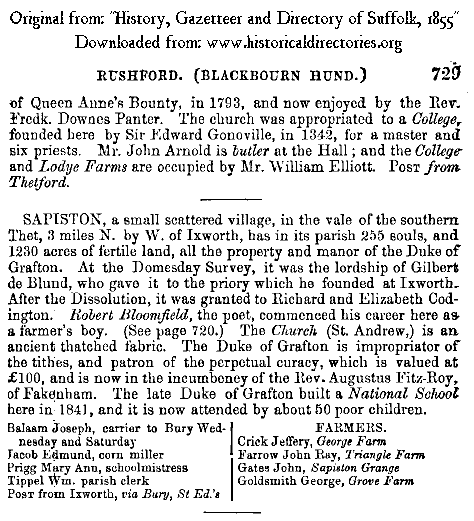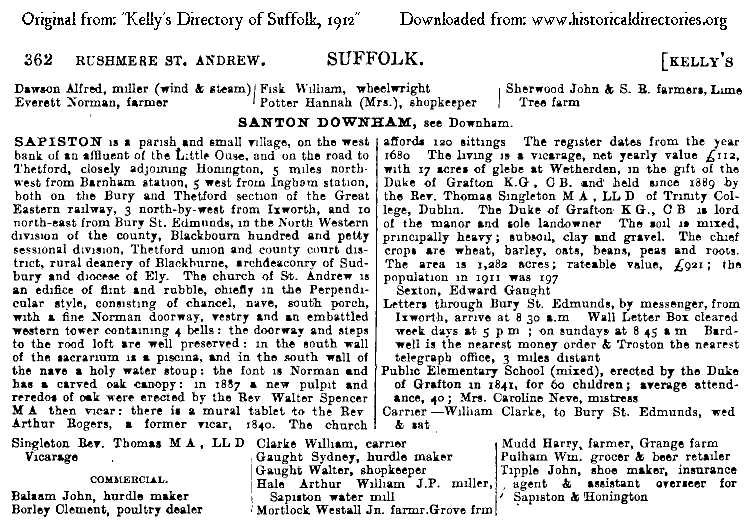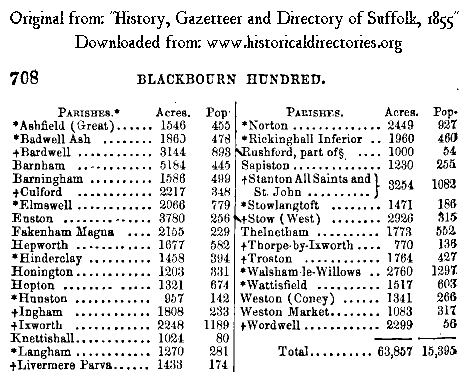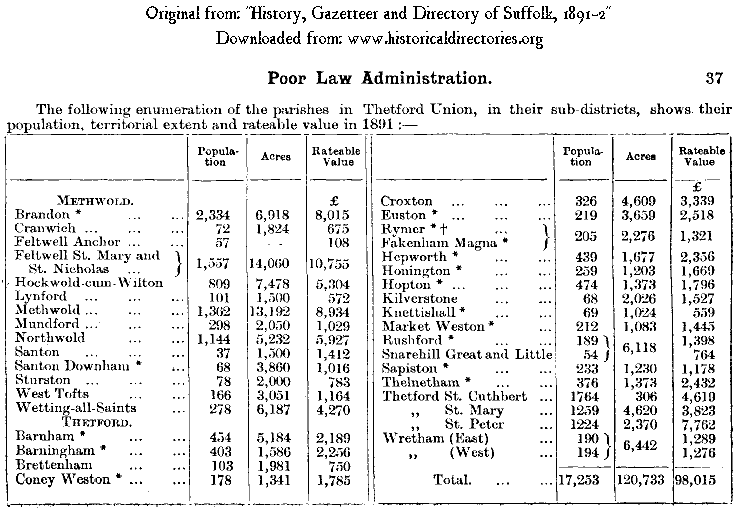SAPISTON
LOCATION OF SAPISTON
Sapiston is the tiny village where my Rampley family originates. It is in northern Suffolk lying on the river Blackbourn (really a stream). The name means village of soapmakers. The village was originally right by the ford across the Blackbourn (or Black Bourn), but now only the church and The Grange farmhouse are left. The rest of the village is reputed to have moved a few hundred metres north as a result of the Black Death – I don’t know if that’s true, but the church (below) does look oddly out of the way today.
Sapiston is bordered to the south-west by Honington, to the north-west by Fakenham Magna, to the north by Euston, to the east by Bardwell, and to the south by Ixworth Thorpe. It is 8 miles from Bury St Edmunds and 6 miles from Thetford in Norfolk.

St Andrew’s Church, Sapiston
A BIT OF HISTORY
The local lord of the manor was the Duke of Grafton in neighbouring Euston. The first Duke of Grafton, previously Earl of Euston, was Henry Fitzroy, the son of King Charles II. The third Duke of Grafton was briefly Prime Minister. The current Duke of Grafton is the 11th, and his son is the Earl of Euston, so I don’t know which one lives in Euston manor now.
The oldest reference I have found to Sapiston is in the history of the Drurys (site now offline), one of the oldest Suffolk families. Matilda, one of that family, married Henry de Sapiston to become Matilda de Sapiston around 1185.
Sapiston church dates back to the 12th century, (a little before the time of Matilda). It has not been in use since 1972 when the parishes of Sapiston and Honington were combined. The church is now maintained by The Churches Conservation Trust. For more details and photos of Sapiston church, see Simon Knott’s informative page on his site www.suffolkchurches.co.uk.
It was in Sapiston that the Suffolk poet Robert Bloomfield, author of “The Farmer’s Boy” (1800), worked from the age of ten to the age of fifteen. He was a farm labourer on the farm of his uncle William Austin (who is buried in Sapiston churchyard). Bloomfield was born in nearby Honington, and the church there contains a memorial to the poet, as well as many notes from admirers.
Here’s what the Gazetteer of Suffolk had to say about Sapiston in 1855. Kelly’s Directory of Suffolk described it like this in 1912.
There was a book about Sapiston called “Village Life and Folk Remembered” by local resident Syd Thurlow, but I have not been able to find a copy.
SAPISTON AND HONINGTON
The map below shows how small and close together Sapiston and Honington are. The distance between the two red outlines is only about 200 metres! The populations of the villages over the years were:
| Sapiston | Honington | ||
| 1855 |
255
|
331
|
Source |
| 1881 |
263
|
308
|
Source now offline |
| 1891 |
233
|
259
|
Source |
| 1901 |
211
|
236
|
Source |
| 1911 |
197
|
221
|
Source (for Sapiston) |
| 1991 |
160
|
1160
|
(because of the air force base) Source now offline |
| 1999 |
160
|
1040
|
Source now offline |
| 2001 |
164
|
1247
|
Source now offline |

DAD’S ARMY
This sleepy part of Suffolk proved to be an ideal filming location for the 1970s British TV show Dad’s Army. In common with much of the surrounding area, Sapiston was used for part of the series, in particular the episode Things that go Bump in the Night.





